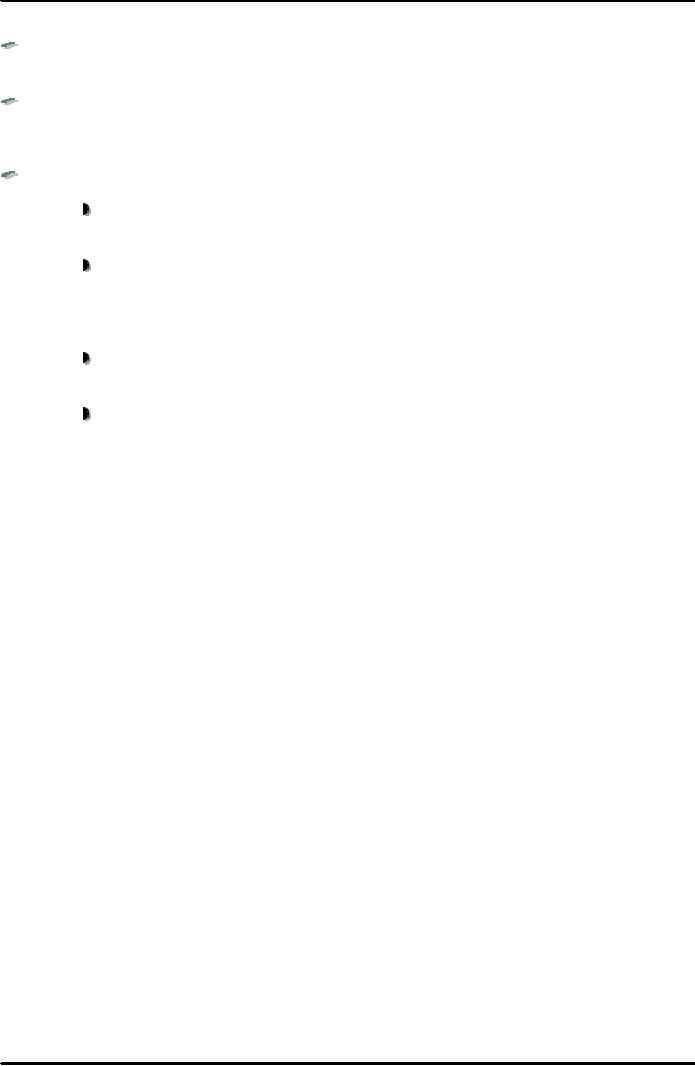 |
BARRIERS TO INTERNATIONAL E-COMMERCE |
| << PORTERíS MODEL OF COMPETITIVE RIVALRY |
| ELECTRONIC TRANSACTIONS ORDINANCE, 2002 - 1 >> |

E-COMMERCE
IT430
VU
Lesson
40
BARRIERS
TO INTERNATIONAL E-COMMERCE
E-commerce
is a combination of three different
areas of study, namely, technology,
business and
law/policy.
We have studied the technology and
business side of e-commerce to a
reasonably good extent.
Now,
we have to start the law and
policy side of e commerce.
However, before we do that lets
discuss
some
interesting issues related to the
international aspect of
e-commerce.
Barriers
to International e-commerce
Barriers
to international ecommerce include lack
of trust, lack of infrastructure, language
and culture.
Lack
of Trust
It is very
important for online
businesses to establish trusting
relationships with their customers
like in the
physical
world where companies ensure
that customers know who they
are. However, it is difficult to
build
trust
because a kind of anonymity
exists for companies trying
to establish web
presence.
There
was, once, a famous cartoon
used to depict that on the internet
nobody knows whether you are
a
dog.
The issue of anonymity can
be explained by the example that a
visiting customer will not
know in case
of an
online bank as to how large or
well-established the bank is, simply by
browsing through its web
site.
On the
other hand, visitors would
not become customers unless
they trust the company behind the
site.
Thus,
a plan for establishing credibility of an
online business is extremely
crucial for its success. In
this
behalf,
attention to the needs of the site
visitors is very important while
designing the web site,
since it can
be
helpful in building trust with
customers. For instance,
there should be easy to find
web pages that
answer
questions of the visitors. Note that
companies with established
brands can build trust for
online
business
more quickly as compared to a
new company/business without
reputation, since a brand
conveys
expectations
about how the online business
would behave. For example,
how the seller online
business
would
react to a claim of refund by the
customer.
Language
Only
way to do business in other
cultures is to be a part of such
cultures. Language plays a very
important
role
in this regard. In the first step
you should provide local
language versions of your
web site. Software
packages
exist that can translate
your web site content
into different languages.
Some sites translate all
of
their
pages, but if the web site
is very large then one can
be selective in translation effort. Usually,
home
page,
or pages related to marketing and
product information or those
related to any local
interest/advertisement
are given higher priority from
translation point of view. Mainly two
approaches are
used
for the translation of the content.
In the
first approach, browser
default language setting can
be communicated to server when
connection
establishes
between browser and server
through `http'. Server can
thus detect default browser
language
setting
and automatically redirect the browser to
those set of pages in that
language. Second approach is
to
include
links to different language
versions on the web site's
home page. One can select
any language by
clicking the
appropriate link. However, the link
should show name of that
language in that language so
that
the
user can read/understand the information.
It would be interesting to look at an
estimate about the
use
of
different languages over the
internet (see
Fig. 1)
161

E-COMMERCE
IT430
VU
Only 370
million of world's 6 billion
population know English
as
native
language
70% content
on web is in English but
more than 50% of
current
internet
users cannot read
English
Other
languages used by people on the internet
are:
∑ Chinese
(9.8%)
∑ Japanese
(9.2%)
∑ Spanish
(7.2%)
∑ German
(6.8%)
∑ Korean
(4.4%)
∑ French
(3.9%)
∑
Italian(3.6%)
∑
Portuguese(2.6%)
Fig.
1
Culture
It should be
useful to know about
different cultural issues surrounding
international e-commerce.
Firstly,
there
is the issue of choice of name.
For example, a famous car
manufacturing company had chosen
the
name
`nova' for one of its car
models, which could be understood by the people in
Latin America in the
sense
that `it will not go'. Similarly, a
company selling baby foods
in jars should not place the picture of
a
baby
on the jar while doing business in
certain parts of Africa,
since in such parts it is
customary (or part of
the
culture/tradition) to put on the jar the picture of
contents contained in it.
Web
designers must be careful about the
choice of icons because they
can have different meanings
in
different
cultures. For instance, in
U.S shopping cart is a good
symbol for selecting and
putting your items
in a
virtual place, whereas shopping
basket is a more appropriate symbol or
icon for the said purpose
in
Europe.
Similarly, in India it would not be
appropriate to use the image of a cow in
a cartoon. In Muslim
countries
people can be offended by human
pictures that violate the
limit of Islamic parda. Use of
colors in
the
web design can also be
troublesome. For example,
white color denotes purity
in Europe and America
but is
associated with death and
mourning in china and some
Asian countries. Similarly, a web page
divided
into
four segments can be
unpleasant to a Japanese visitor
because no. four is a symbol
of death in that
culture.
Some
parts of the world have cultural
environment that is not welcoming
for ecommerce. For instance,
in
certain
Islamic countries the exchange of
information that conflicts with Islamic
values is forbidden.
Then,
there
are internet censorship
activities of governments in certain
parts of the world. For
example, there are
complex
registration requirements/regulations in china imposed
by the government which a business
must
comply
with in order to engage in
ecommerce.
The
Chinese government conducts review of
ISPs record. The ISPs
have to maintain a record of
their
customers
and retain copies of all
their email messages etc. In
China a number of internet cafťs were
closed
down
for violating the electronic record
keeping procedures. Some countries do
not have strict
censorship
requirement as
above, but have strong
cultural requirements. For example, in
France an advertisement for
a
product
or service must be in French,
thus, an online business
based in America wishing to ship products
to
its
customers in France must
provide French version of its
pages if it intends to comply with
French laws.
162

E-COMMERCE
IT430
VU
Infrastructure
issues
Internet
infrastructure includes computers and
software connected to internet
and communication
networks
over which data packets
can travel. In many parts of the
world, telecommunication industry is
either owned by the
government or is strictly regulated by the government.
This government control or
regulations
have retarded growth of infrastructure to
a limit that sometimes it cannot
fully support
internet
data
traffic. For example, there
is the huge issue of low
bandwidth (slow data communication) in
most third
world
countries.
In
Europe, cost for internet
connection is considered quite high,
discouraging people to spend more
time
on surfing the
web while shopping. Moreover,
international transactions mostly require
physical handling of
goods
by several freight carriers
and shipping companies. This
storage and handling
normally requires
monitoring
by government custom officers, which is
not done in domestic transactions. A
coordinated
effort
is, therefore, required between customs
brokers, freight agencies
and government officials in
such
cases
due to complex government
regulations.
According
to an estimate, almost half of
all businesses on the web
turn down international
orders because
of the
lack of proper infrastructure to handle
such transactions, thus losing
millions of dollars.
Electronic
Transactions Ordinance, 2002
(ETO)
ETO is
the law introduced in 2002
which extends to the whole of
Pakistan. It basically provides
legal
recognition
to documents in electronic form and to
electronic signatures. To understand this
law, it would
be
useful to revise the concept
related to the working of digital
signature technology (refer to Lecture
no.
23).
We shall look at salient
provisions/features of this law as it
directly deals with
e-commerce in Pakistan.
Section
2 of the ETO defines different
terms used in it. For
convenience these terms have
been reproduced
here
(you do not need to memorize
these for exam).
"`Certificate'
means
a certificate issued by a Certification
Service Provider for the
purpose of
confirming
the authenticity or integrity or both, of
the information contained therein, of an
electronic
document or of an
electronic signature in respect of which
it is issued".
"`Cryptography
services' means
services in relation to the
transformation of contents of an
electronic
document
from its original form to
one that cannot be understood or decoded
by any unauthorized
person".
"`Accredited
Certification Service Provider' means
a Certification Service Provider
accredited under
this Ordinance to
issue certificates for the
use of its cryptography
services".
"`Certification
Practice Statement',
means the statement prepared by a
certification service
provider
specifying
the practices it employs in relation to
the issuance of certificates and
matters connected
therewith".
"`Originator',
means a person by whom, or on whose
behalf, electronic document purports to
have
been
generated or sent prior to
receipt or storage, if any,
but does not include an
intermediary".
"`Addressee'
means
the person intended by the originator to
receive the electronic communication
but
does
not include an intermediary".
"`information
system' means
an electronic system for creating,
generating, sending, receiving,
storing,
reproducing,
displaying, recording or processing
information".
"`Electronic
Signature' means
any letters, numbers,
symbols, images, characters or
any combination
thereof
in electronic form, applied to,
incorporated in or associated with an
electronic document, with
the
intention of authenticating or approving the
same, in order to establish
authenticity or integrity, or
both".
163

E-COMMERCE
IT430
VU
"`Authenticity'
means,
in relation to an electronic document or electronic
signature, the identification
of and
attribution to a particular person or
information system".
"`Integrity'
means,
in relation to an electronic document, electronic
signature or advanced electronic
signature,
the electronic document, electronic signature or
advanced electronic signature that
has not
been
tampered with, altered or
modified since a particular point in
time".
"`Appropriate
authority' means
In
relation to items contained in the
Federal Legislative List of the
Constitution of the
Islamic Republic of
Pakistan, 1973, the Federal
Legislature or Federal
Government;
In
relation to items contained in the Concurrent
Legislative List of the Constitution of
the
Islamic Republic of
Pakistan, 1973, for which a
Federal law is in force, the
Federal
Legislature
or Federal Government, and, in
all other cases, respective
Provincial Legislature
or
Provincial Government;
In
relation to the functions of the Federal
Government or respective
Provincial
Governments being
discharged by a statutory body, that
statutory body ; and
In
relation to matters in respect whereof
the Supreme Court or the High
Courts are
empowered
to make rules for the regulation of
their proceedings, the Supreme
Court or
High
Court, as the case may
be".
Section
3 of the ETO
provides:
"No
document, record, information,
communication or transaction shall be
denied legal
recognition,
admissibility,
effect, validity, proof or enforceability
on the ground that it is in electronic
form and has
not
been attested by any
witness".
Section
4 of the ETO
provides:
"The
requirement under any law for
any document, record,
information, communication or
transaction
to be in
written form shall be deemed
satisfied where the document,
record, information,
communication or
transaction is in electronic form, if the
same is accessible so as to be usable
for
subsequent
reference".
Note
that by virtue of Sections 3
and 4 above, the requirement of law
for a document to be in writing
shall
be deemed satisfied if that document is
in electronic form. Consequently, if a
law requires that
one
must
send a legal notice before filing a
case against a government organization
and that legal notice
is
sent
in electronic form (e-mail attachment);
it would be said that the requirement of
law has been
fulfilled
in terms of sections 3 and 4
above.
164
Table of Contents:
- E-COMMERCE
- WHAT IS A NETWORK
- HOW MANY CLASS A, B, C NETWORKS AND HOSTS ARE POSSIBLE
- NETWORKING DEVICES
- BASICS OF HTML 1
- BASICS OF HTML 2
- TEXT BOXES, CHECK BOXES, RADIO BUTTONS
- FRAMES AND IMAGES IN HTML
- TAG ATTRIBUTES, SOUNDS FILES, ANIMATIONS
- STYLE SHEETS 1
- STYLE SHEETS 2
- SOME USEFUL STYLE SHEETS PROPERTIES
- JAVA SCRIPTING 1
- JAVA SCRIPTING 2
- JAVA SCRIPTING 3
- JAVA SCRIPTING AND XML
- CLIENT AND SERVER SIDE PROCESSING OF DATA
- APPLETS, CGI SCRIPTS
- MAINTAINING STATE IN A STATELESS SYSTEM
- INTEGRATION WITH ERP SYSTEMS
- FIREWALLS
- CRYPTOGRAPHY
- HASH FUNCTION AND MESSAGE DIGEST
- SYMMETRIC KEY ALGORITHMS
- VIRTUAL PIN PAYMENT SYSTEM
- E-CASH PAYMENT SYSTEM 1
- E-CASH PAYMENT SYSTEM 2
- SECURE SOCKET LAYER (SSL)
- E-BUSINESS: DISADVANTAGES OF E-BUSINESS
- E-BUSINESS REVENUE MODELS
- E-MAIL MARKETING
- CUSTOMER RELATIONSHIP MANAGEMENT (CRM)
- META INFORMATION
- DATA MINING
- CONFIDENCE AND SUPPORT
- ELECTRONIC DATA INTERCHANGE (EDI)
- PERSONAL FINANCE ONLINE
- SUPPLY CHAIN
- PORTERíS MODEL OF COMPETITIVE RIVALRY
- BARRIERS TO INTERNATIONAL E-COMMERCE
- ELECTRONIC TRANSACTIONS ORDINANCE, 2002 - 1
- ELECTRONIC TRANSACTIONS ORDINANCE, 2002 - 2
- ELECTRONIC TRANSACTIONS ORDINANCE, 2002 - 3
- GLOBAL LEGAL ISSUES OF E-COMMERCE - 1
- GLOBAL LEGAL ISSUES OF E-COMMERCE - 2